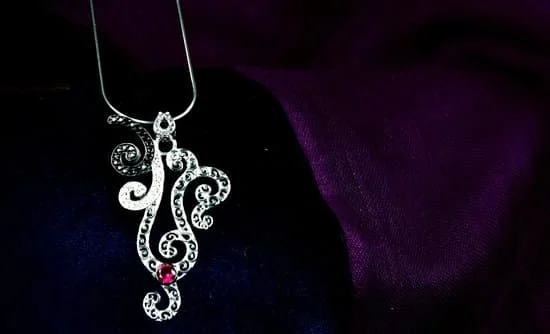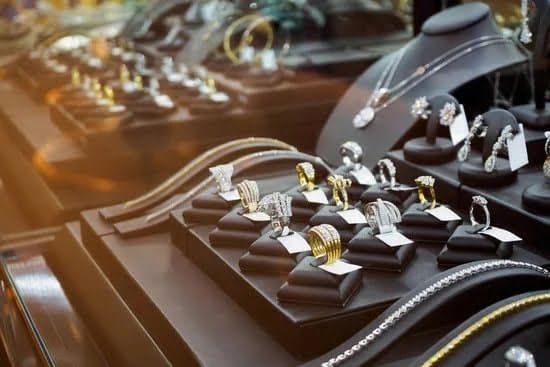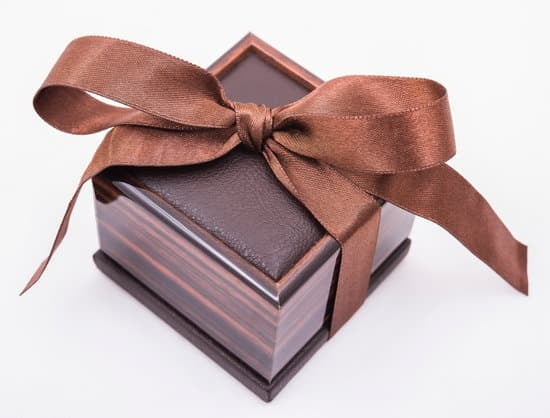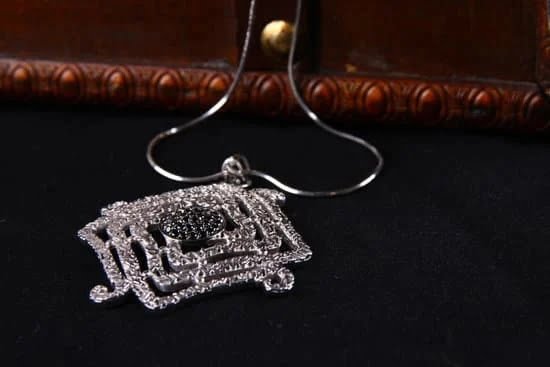The Art Deco era of the 1920s and 1930s is renowned for its distinctive style and impeccable craftsmanship, particularly in the realm of metal jewelry. This era saw the rise of a new aesthetic characterized by geometric patterns, bold colors, and luxurious materials. From exquisitely designed necklaces to intricately crafted brooches, metal jewelry from the Art Deco era continues to captivate with its timeless beauty.
During this extraordinary time in history, the Art Deco movement had a significant influence on various industries, including jewelry. The movement emerged as a response to the ornate and intricate designs of the preceding Art Nouveau period, instead celebrating clean lines, sleek forms, and modern sensibilities. This shift in design principles paved the way for a revolution in metalwork and brought forth an array of stunning pieces that remain coveted even today.
At the heart of Art Deco metal jewelry lies an essence that captures both elegance and glamor. The painstaking craftsmanship involved in creating these pieces often involved highly skilled artisans using traditional techniques alongside innovative methods. Metalwork became integral to expressing individuality and highlighting a sense of sophistication through striking designs that showcased mastery over the medium.
In this article series, we will take a comprehensive dive into the glittering history of metal jewelry from the Art Deco era. We will explore iconic styles, delve into key materials used during that time period, celebrate renowned jewelers who shaped this industry, and discuss how modern designers continue to draw inspiration from this influential movement. Join us on this journey as we uncover the enduring appeal of Art Deco metal jewelry – a testament to its lasting charm and allure.
Understanding the Art Deco Movement
During the early 20th century, the Art Deco movement emerged as a prominent art and design style, influencing various industries including jewelry. Characterized by its bold geometric shapes, vibrant colors, and lavish ornamentation, Art Deco revolutionized the world of jewelry design. This section provides a brief overview of the Art Deco movement and its profound influence on the jewelry industry.
Art Deco originated in France after World War I and quickly spread throughout Europe and the United States during the 1920s and 1930s. It was a response to the previous Art Nouveau style, which focused on organic forms and curves. In contrast, Art Deco embraced clean lines and symmetrical shapes inspired by Cubism, Futurism, and other modern art movements.
The influence of Art Deco on the jewelry industry was revolutionary. Jewelry designers began to experiment with new materials such as platinum, white gold, diamonds, emeralds, rubies, sapphires, and black onyx to create dazzling pieces that reflected the spirit of the era. The clean lines and bold geometry of Art Deco influenced every aspect of jewelry design from necklaces to bracelets to rings.
To better understand how Art Deco influenced jewelry design during this period:
- Geometry: Symmetrical geometric shapes such as triangles, rectangles, circles were commonly used in jewelry designs.
- Color Contrast: Vibrant color combinations such as black and white or red and black were utilized to create striking contrasts.
- Ornamentation: Intricate patterns such as sunbursts, chevrons or zigzags added glamour and sophistication to jewelry pieces.
The influence of Art Deco continues to be felt in modern-day jewelry design. Many contemporary designers draw inspiration from this iconic era to create pieces that exude timeless elegance with a touch of modern flair. The impact of Art Deco on the jewelry industry remains significant, as its distinctive style and innovative approach to design continue to captivate and inspire fashion enthusiasts around the world.
The Essence of Metal Jewelry
Metal jewelry from the Art Deco era is known for its distinct style and exquisite craftsmanship. The essence of metal jewelry during this time period can be defined by its geometric shapes, bold colors, and intricate designs. Art Deco metalwork represented a departure from the ornate and delicate styles of previous eras, embracing a more modern and sleek aesthetic.
One characteristic that defines Art Deco metalwork is its use of geometric shapes. This style was heavily influenced by the rise of industrialization and the machine age, with designers drawing inspiration from modern architecture and machinery. Geometric patterns such as chevrons, triangles, circles, and squares were prominent in Art Deco metal jewelry, creating a sense of symmetry and balance.
Bold colors also played a significant role in defining Art Deco metal jewelry. Gemstones such as emeralds, rubies, sapphires, and diamonds were often used to add vibrant pops of color to the pieces. These gemstones were typically cut into geometric shapes to complement the overall design. Additionally, enamel was frequently used to add vibrant hues to the metalwork itself.
Intricate designs were another hallmark of Art Deco metal jewelry. This era saw a renewed interest in precision and craftsmanship, resulting in highly detailed pieces that showcased the skill of the artisans. Filigree work was popular during this time, adding an intricate latticework effect to rings, bracelets, necklaces, and brooches. Motifs such as sunbursts, fan shapes, flowers, feathers, and Egyptian-inspired designs were also commonly featured in Art Deco metalwork.
Overall, the essence of metal jewelry from the Art Deco era can be defined by its geometric shapes, bold colors, and intricate designs. These characteristics continue to captivate fashion enthusiasts today who appreciate the timeless beauty of this glamorous era in jewelry making.
Unveiling the Jewelry of the Roaring Twenties
During the vibrant and glamorous era of the 1920s, known as the “Roaring Twenties,” art deco jewelry flourished and became a symbol of opulence and style. This period was characterized by a desire for modernity, luxury, and artistic expression, all of which were encapsulated in the exquisite pieces of metal jewelry from the Art Deco era. In this section, we will take a closer look at some of these stunning creations, exploring their unique features and influences.
The Rise of Geometric Shapes
One of the defining characteristics of Art Deco metal jewelry is its emphasis on geometric shapes. Inspired by the vibrant energy of urban life and technological advancements, designers during this era began incorporating bold and distinct geometric patterns into their creations. Rectangular shapes, such as step cuts and baguettes, became particularly popular in engagement rings and bracelets. Other common motifs included triangles, squares, circles, and zigzags.
The Influence of Egyptian Revival
Another significant influence on Art Deco metal jewelry was the discovery of King Tutankhamun’s tomb in 1922. This event sparked a fascination with ancient Egyptian culture that heavily influenced the design aesthetic during this period. The use of hieroglyphics, lotus flowers, and scarab beetles became prevalent in both fine jewelry and costume pieces. Gold was often used to mimic the appearance of ancient artifacts discovered in tombs.
The Allure of Precious Gemstones
In addition to its focus on metals and geometric shapes, Art Deco metal jewelry also showcased an array of precious gemstones. From diamonds to emeralds to sapphires, these precious stones added another layer of glamour and extravagance to the already stunning designs. Popular settings during this time included platinum or white gold frames adorned with intricately cut gemstones in various geometric arrangements.
Overall, the jewelry of the Roaring Twenties was a testament to the exuberance and dynamism of the Art Deco era. Its unique blend of geometry, ancient influences, and precious gemstones created an aesthetic that remains captivating to this day. Whether you are an art enthusiast or a fashion enthusiast, exploring the exquisite pieces from the Art Deco era will undoubtedly transport you to a time when glamour and elegance were at their peak.
Iconic Styles and Designs
The Influence of Geometric Shapes
One of the most notable characteristics of Art Deco metal jewelry is its use of geometric shapes. Straight lines, angles, and symmetry are key elements that define the style. The influence of Cubism, a groundbreaking art movement that emerged in the early 20th century, can be seen in the angular designs and abstract patterns of Art Deco metal jewelry.
Popular geometric motifs include chevrons, hexagons, triangles, and sunbursts. These bold and dynamic shapes were often combined to create intricate patterns that exuded sophistication. The clean lines and symmetrical arrangements reflected the desire for modernity and order during this era.
The Elegance of Filigree
Filigree work is another distinctive characteristic of Art Deco metal jewelry. This technique involves delicate wirework or openwork designs created by twisting or curling thin wires into intricate patterns. While filigree had been used in jewelry making for centuries, it experienced a revival during the Art Deco period.
The filigree work on Art Deco metal jewelry was often accompanied by other design elements such as gemstones or enamel. This combination added depth and visual interest to the pieces, creating a mesmerizing effect when worn. The fine craftsmanship and attention to detail in filigree work showcased the skill and artistry of the jewelers during this era.
Bold Colors and Contrasting Materials
Art Deco metal jewelry embraced strong color contrasts to make a statement. Vivid gems such as emeralds, rubies, sapphires, and amethysts were frequently used to create vibrant pops of color against precious metals like platinum or white gold. In addition to gemstones, colored enamels were also popular for infusing bursts of color into the designs.
The use of contrasting materials extended beyond gemstones and enamels. Art Deco metal jewelry often featured a combination of different metals, such as platinum with yellow gold or silver with rose gold, creating an eye-catching contrast in color and texture. This unconventional blending of metals added to the uniqueness and allure of Art Deco jewelry.
Unearthing the Role of Key Materials
Art deco metal jewelry is renowned for its exquisite craftsmanship and striking designs. Central to its creation are the key materials used in producing these timeless pieces. The metalwork of the art deco era was a reflection of the modern industrial age, utilizing a variety of metals to create bold and geometric designs that captured the spirit of the time.
1. Platinum:
Platinum was a popular choice for art deco metal jewelry due to its durability and lustrous finish. It was often used as the base metal, providing a strong foundation for intricate detailing and gemstone settings. The cool, silvery-white color of platinum complemented the geometric shapes and clean lines that defined art deco design.
2. Gold:
Both yellow and white gold were commonly used in art deco metal jewelry. Yellow gold added warmth and richness to pieces, while white gold provided a sleek and sophisticated look. Gold was often used in combination with other metals or embellished with colorful gemstones to create contrasting accents.
3. Silver:
Sterling silver was another favored metal used in art deco jewelry creation. Its affordability made it accessible to a wider audience, allowing more people to own pieces inspired by this influential era. Silver provided a bright and reflective surface that enhanced the geometric patterns found in many art deco designs.
4. Enamel:
Enamel work played a significant role in enhancing the beauty of art deco metal jewelry. Vibrant colors were applied onto the surface of metals such as platinum or gold, creating intricate patterns or stylized motifs. Enamel added depth and dimension to pieces, adding an element of visual interest to complement their geometric forms.
5. Bakelite:
Although not technically a metal, bakelite was one of the innovative materials utilized during the art dec era for jewelry making. This early plastic material was often incorporated into art deco pieces as accents or embellishments due to its malleability and ability to take on bold colors.
Renowned Jewelers of the Art Deco Era
The Influence of Renowned Jewelers in the Art Deco Era
During the Art Deco era, several talented jewelers played a crucial role in shaping and defining the metal jewelry industry. Their exquisite craftsmanship and innovative designs brought about a revolution in jewelry making, setting new standards for elegance and luxury. These renowned jewelers not only created stunning pieces of art but also left a lasting mark on the history of jewelry.
One such pioneer of the Art Deco movement was Cartier, a prestigious French jeweler founded by Louis-François Cartier in 1847. During the 1920s and 1930s, Cartier became synonymous with luxury and opulence. The brand’s iconic designs featured geometric shapes, vibrant gemstones, and intricate metalwork, reflecting the boldness and extravagance of the Art Deco era. Cartier’s innovative use of platinum and diamonds revolutionized jewelry design and set new trends that continue to inspire contemporary designers today.
Another notable jeweler from this era is Jean Fouquet. Based in Paris, Fouquet created exquisite pieces that combined modern aesthetics with traditional artisan techniques. His jewelry showcased meticulous enamel work, vibrant color combinations, and intricate metal detailing inspired by Egyptian motifs. Fouquet’s creations were highly sought after by celebrities and socialites during the Art Deco period, cementing his place as one of the leading jewelers of his time.
Fulco di Verdura: From Sicily to Hollywood
Fulco di Verdura was an Italian jeweler who gained prominence during the Art Deco era for his bold and unconventional designs that captivated Hollywood stars such as Coco Chanel and Greta Garbo. Raised in a noble family in Sicily, di Verdura’s designs often incorporated vivid colored gemstones such as emeralds, rubies, sapphires, creating striking contrasts against precious metals like gold and platinum.
His jewelry was known for its playful yet sophisticated aesthetic, featuring motifs inspired by nature, such as flowers, shells, and animals.
With the patronage of influential personalities and his creative vision, Verdura opened his own studio in New York City in 1939. His unique style challenged traditional notions of jewelry design and paved the way for more daring and expressive creations. Today, the Verdura brand continues to thrive, carrying on the legacy of its founder by crafting high-quality pieces inspired by the Art Deco era.
Van Cleef & amp; Arpels: The Epitome of Elegance
Founded in 1906 by Alfred Van Cleef and his uncle Salomon Arpels, Van Cleef & amp; Arpels is renowned for its exquisite craftsmanship and timeless designs. During the Art Deco period, the maison embraced geometric forms and symmetrical patterns in their jewelry creations. They incorporated vibrant gemstones like rubies, emeralds, sapphires into their designs to accentuate the brilliance of their precious metals.
One iconic innovation introduced by Van Cleef & amp; Arpels during this time was the use of invisible settings. This technique allowed stones to be seamlessly set without visible prongs or metalwork holding them in place. They also popularized transformable jewelry that could be worn in multiple ways, allowing flexibility and versatility for the wearer.
Collecting Art Deco Metal Jewelry
Collecting art deco metal jewelry is a rewarding and exciting hobby for many enthusiasts. The allure and glamour of this era make these pieces highly sought after and valuable. If you are interested in building your own treasured collection of art deco metal jewelry, there are a few key factors to consider.
Firstly, it is important to familiarize yourself with the styles and designs of art deco metal jewelry. This will help you identify authentic pieces and differentiate them from imitations or reproductions. Art deco jewelry is known for its geometric shapes, bold colors, and intricate detailing. Understanding the characteristics of this style will enable you to make informed decisions when adding pieces to your collection.
Another aspect to consider when collecting art deco metal jewelry is the materials used in its creation. During the art deco era, precious metals such as platinum, gold, and silver were commonly used. These metals were often combined with vibrant gemstones or enamel detailing to create eye-catching designs. Researching the different types of metals used and their valued characteristics will assist you in assessing the quality and craftsmanship of potential additions to your collection.
Lastly, building a treasured collection of art deco metal jewelry requires patience and careful selection. It is advisable to research reputable dealers or attend auctions specializing in vintage jewelry. This will give you access to a wide range of pieces from various designers and allow you to choose those that resonate with your personal taste.
A well-curated collection can be both an investment as well as a reflection of your appreciation for the beauty and history of art deco metal jewelry. By following these guidelines, you will be on your way to building a cherished treasure trove that showcases the elegance and enduring appeal of this remarkable era.
| Step | Description |
|---|---|
| 1 | Familiarize yourself with the styles and designs of art deco metal jewelry. |
| 2 | Research the different types of metals used in art deco jewelry and their valued characteristics. |
| 3 | Find reputable dealers or attend auctions specializing in vintage jewelry to carefully select pieces for your collection. |
Art Deco Metal Jewelry in Contemporary Fashion
As we continue to embrace and appreciate the beauty of Art Deco metal jewelry, it is fascinating to see how modern designers have been able to incorporate this timeless style into contemporary fashion. While the Art Deco era may have ended nearly a century ago, its influence can still be seen in the works of many renowned jewelry designers today.
One of the ways that modern designers keep the spirit of Art Deco alive is by creating pieces that pay homage to the iconic styles and designs of the era. They draw inspiration from geometric shapes, lavish ornamentation, and bold color contrasts commonly found in Art Deco metalwork. This allows them to create unique and eye-catching pieces that seamlessly blend classic elegance with a modern twist.
Additionally, modern designers often experiment with materials and techniques to create new interpretations of Art Deco metal jewelry. While traditional metals such as platinum, gold, and silver are still widely used, they are now often combined with unconventional materials like acrylics or semi-precious gemstones. This creative approach adds a contemporary element to the designs while still staying true to the essence of Art Deco.
| Designer | Description |
|---|---|
| Sarah Chloe | Combines geometric shapes with engraved details to create sleek and sophisticated necklaces. |
| Oscar de la Renta | Incorporates bold colors and intricate patterns reminiscent of Art Deco architecture into statement earrings. |
| Alexis Bittar | Combines Art Deco-inspired metalwork with contemporary resin materials for a modern yet glamorous look. |
By embracing the stylistic elements and creative freedom that Art Deco offers, modern designers are able to breathe new life into this classic era. Their creations pay homage to the elegance and glamour of the past while adding their own unique flair. As a result, Art Deco metal jewelry remains relevant and continues to captivate fashion enthusiasts today.
The Enduring Appeal of Art Deco Metal Jewelry
Art Deco metal jewelry continues to captivate fashion enthusiasts today due to its enduring appeal. The distinctive characteristics and designs of Art Deco metal jewelry have contributed to its timeless beauty that transcends trends and fads. This section will explore why Art Deco metal jewelry remains a favorite among fashion enthusiasts.
One reason for the enduring appeal of Art Deco metal jewelry is its iconic styles and designs. The geometric shapes, bold colors, and intricate details of Art Deco pieces create a statement that is both elegant and glamorous. This aesthetic has withstood the test of time and continues to resonate with modern fashion sensibilities.
Another reason for the enduring popularity of Art Deco metal jewelry is its historical significance. The Art Deco era, which spanned from the 1920s to the 1930s, was a period of significant social, cultural, and artistic change. The jewelry created during this time reflects the spirit of innovation, modernity, and opulence characteristic of the era. Fashion enthusiasts are drawn to this connection with history and heritage when they wear Art Deco metal jewelry.
Furthermore, Art Deco metal jewelry showcases exceptional craftsmanship. From intricate metalwork to elaborate gemstone settings, these pieces demonstrate the skill and attention to detail of the artisans who created them. The quality construction and use of high-quality materials further contribute to the allure of Art Deco metal jewelry.
Indeed, there are noteworthy reasons why Art Deco metal jewelry continues to captivate fashion enthusiasts today. Its iconic styles, historical significance, and exceptional craftsmanship make it a testament to timeless beauty in fashion. Whether through collecting vintage pieces or embracing modern interpretations influenced by Art Deco design principles, individuals can continue to appreciate and enjoy the enduring appeal of this captivating style.
| Reason | Description |
|---|---|
| Iconic Styles and Designs | The geometric shapes, bold colors, and intricate details of Art Deco pieces create a statement that is both elegant and glamorous. |
| Historical Significance | Reflects the spirit of innovation, modernity, and opulence characteristic of the Art Deco era. |
| Exceptional Craftsmanship | Art Deco metal jewelry showcases exceptional craftsmanship through intricate metalwork and elaborate gemstone settings, demonstrating the skill and attention to detail of the artisans who created them. |
Conclusion
In conclusion, Art Deco metal jewelry remains a captivating testament to timeless beauty. The allure of this era lies in its glamorous and elegant designs that continue to captivate fashion enthusiasts today. Through an exploration of the glittering history, influence, essence, and materials utilized in Art Deco metal jewelry, we have gained a deeper appreciation for its enduring appeal.
The Art Deco movement had a significant influence on the jewelry industry, shaping not only the designs but also the techniques used in metalwork. The distinctive characteristics of Art Deco metal jewelry, such as geometric shapes, bold colors, and intricate detailing, set it apart from other styles. These iconic styles and designs are still celebrated today for their sophistication and innovation.
Throughout the Roaring Twenties, renowned jewelers emerged as pioneers in creating exquisite pieces that defined the Art Deco era. Their craftsmanship and artistic vision paved the way for future generations of designers. Collectors now have an opportunity to build their own treasured collection of Art Deco metal jewelry as these pieces continue to hold their value and remain highly sought after.
Even in contemporary fashion, modern designers draw inspiration from the Art Deco era to infuse its spirit into their creations. This serves as a testament to the lasting influence of this style on the fashion world. Art Deco metal jewelry has proven itself as more than just a passing trend; it is a timeless expression of glamour and elegance that transcends time.
In rediscovering the glamour and elegance of Art Deco metal jewelry, we gain insight into an era characterized by opulence and creativity. Its enduring appeal lies not only in its historical significance but also in its ability to captivate us with its timeless beauty. As we continue to celebrate this remarkable style, let us be reminded that true art never goes out of style; it only evolves and inspires new generations to appreciate its splendor.
Frequently Asked Questions
What metal was used in Art Deco jewelry?
Art Deco jewelry showcased a wide range of metals, with platinum being the most popular and coveted choice during this era. Platinum’s durability and lustrous white appearance made it a favored metal for creating exquisite Art Deco pieces.
However, other metals like gold in various colors such as yellow, white, and rose were also commonly used. Additionally, silver was occasionally incorporated into Art Deco designs, often serving as a backdrop for gemstones or enamel accents.
What are the names of Art Deco jewelry?
Art Deco jewelry encompasses different types and styles, all reflecting the distinctive aesthetics of the era. Some notable names associated with Art Deco jewelry include Cartier, Van Cleef & Arpels, Boucheron, and René Lalique.
These renowned brands and designers created iconic pieces that embodied the geometric shapes, vibrant colors, and intricate motifs characteristic of Art Deco style. From bold statement necklaces to elegant bracelets, delicate brooches to elaborate earrings, Art Deco jewelry encompassed a vast array of designs.
What metals were used in Art Deco?
In Art Deco jewelry, various metals were employed to bring forth unique design elements and textures. Alongside platinum and gold – including yellow gold as well as white gold – silver was also utilized in some pieces of Art Deco jewelry. The prevalent use of platinum was due to its strength and ability to hold intricate detailing effortlessly while exuding an exquisite glow.
Gold brought warmth to these designs through its regal hues. Often combined with gemstones or enameling techniques, these metals helped create dazzling works of art that epitomized the glamour and opulence associated with the Art Deco era.

Welcome to my jewelry blog! My name is Sarah and I am the owner of this blog.
I love making jewelry and sharing my creations with others.
So whether you’re someone who loves wearing jewelry yourself or simply enjoys learning about it, be sure to check out my blog for insightful posts on everything related to this exciting topic!





